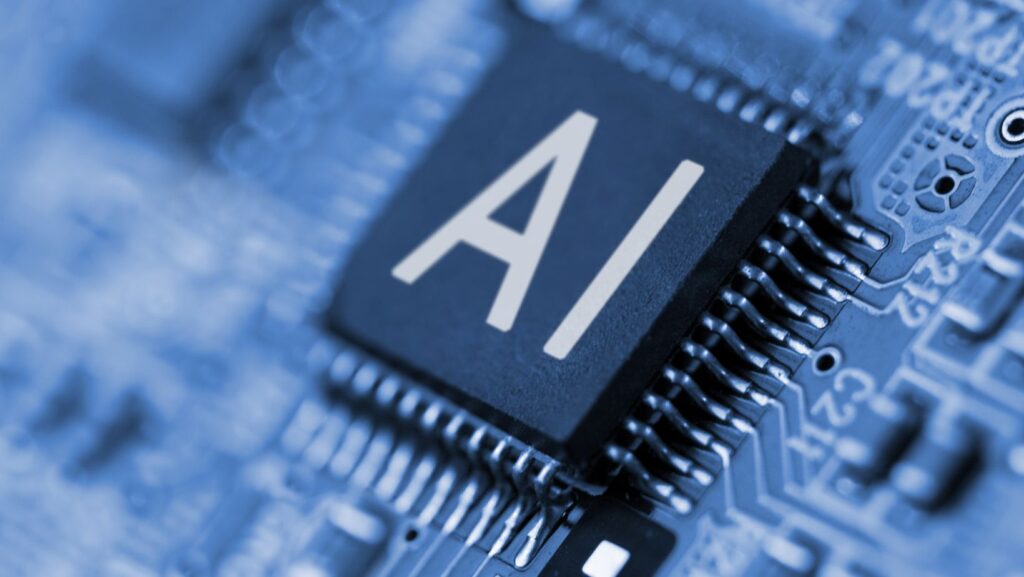
Today, the software development industry has evolved. Now, it has integrated AI into its processes, practices, and standards to stay ahead of the competition and work faster and easier. AI in software testing has revolutionized the software testing process since AI-assisted software development equips teams with practical insights, reducing testing time and increasing defect detection rates.
However, like with every new technology, AI testing has two sides: myth and reality. In this article, we will discuss the role of AI in software testing and reveal the myth and reality of AI testing. We will share some common misconceptions, uncover hidden challenges, and share greatly practices to fully utilize the full power of AI testing.
AI Testing: Definition and Significance
AI testing is not just a technological advancement; it is a method of redefining how teams approach software quality assurance. Instead of relying solely on human testers and manual methods, AI testing uses machine learning algorithms and data-driven techniques by continuously learning from new data to analyze huge data sets, identify defects, predict potential issues, and optimize the entire testing lifecycle, reducing the time spent on testing.
AI testing capabilities do not stop here. By simulating a wide range of scenarios and user behaviors, it improves test coverage. With this ability, even the most hidden bugs can be caught before they can damage the application system.
The Significance Of Ai Testing In Software Testing
Leveraging AI in software testing can improve the quality and efficiency of software testing processes. It helps transform the labor-intensive and error-prone testing process into a quicker, more accurate, and efficient process. AI can predict potential issues before they turn into major ones, enabling teams to address them proactively.
AI in software development offers multiple benefits, such as automated test case creation, enhanced test coverage, accelerated test execution, and identification of intricate patterns that human testers might overlook. Other benefits of incorporating AI in software testing are as follows.
- Self-healing tests- AI-powered self-healing automation helps prevent test failures by automatically updating the tests whenever the code changes. This helps keep the tests stable, accurate, up-to-date, and unbreakable, thereby saving time, effort, and resources.
- Test data generation- AI testing makes this possible to automate test data generation. Testers can even schedule tests to run overnight or even continuously. This saves an ample amount of time, effort, and resources helping to get comprehensive test data coverage and always keeping the software up to date.
- Test report generation- AI-driven test automation provides detailed test reports after every execution. These reports provide comprehensive insights for both developers and QA, helping them identify areas for improvement quickly and efficiently.
- Accelerated testing- Earlier, writing and running tests were done manually. AI-driven test automation accelerates the process by automating repetitive and time-consuming test scripts. With AI testing, manual testers can focus on areas where manual evaluation is more crucial, such as exploratory testing.
- Accuracy and Defect Detection- AI in software testing is like having a team of detail-oriented inspectors who never miss a beat. AI-driven defect analysis uses ML to analyze massive datasets and identify patterns and anomalies within the code that even the most experienced human testers can miss. It provides higher accuracy in defect detection, catching bugs early in the development process.
- Regression automation- Automated regression testing eliminates the need for thorough retesting whenever upgrades, bug patches, or code changes are made to the application being tested. Furthermore, by preventing post-release problems and maintenance expenses, AI testing’s increased accuracy can free up team members’ time for more strategic work.
- Test Coverage- AI testing tools can easily minimize the risk of unexpected issues arising in production. It can simulate a wide range of user behaviors and scenarios and handles everything from peak traffic loads to rare user interactions, guaranteeing that even the most obscure edge cases are tested.
Common Myths Vs The Reality Of Ai Testing
No doubt, AI in software testing is an incredibly powerful technology, transforming the software development process. However, it works ideally when used under human expertise to handle more complex and creative aspects of testing rather than replacing them entirely. People do not always know the truth about this technology. There are many misconceptions regarding this technology that might hold users back from using its full potential.
Myth: AI Testing is Fully Automated
One of the biggest myths about AI testing is that it can create test cases completely without human involvement.
Reality- In reality, AI can create test cases by investigating requirements, code, design documents, user interactions, and application data in addition to user stories. AI still requires careful setup, training, and supervision by trained professionals to handle complicated edge cases, even while it can significantly reduce the need for manual testing, especially for repetitive jobs like cross-browser compatibility checks. This will guarantee that the test cases align with the testing objectives and user scenarios.
Furthermore, human testers are crucial for interpreting results, optimizing algorithms, managing complex scenarios, and verifying test cases for efficacy and coverage, even though AI can assist in finding patterns and coming up with test concepts. LambdaTest, a popular cloud-based platform for cross-browser testing, has incorporated AI-driven testing features to help automate and streamline the testing process.
Myth: Ai Will Replace Software Development Teams
A prevalent myth regarding AI is that it will eventually eliminate the need for software developers, quality analysts, experience designers, engineers, and other related roles.
Reality- Definitely AI will not replace human intelligence; rather it is reshaping the software testing industry. It’s essential to recognize that machine intelligence is not equal to human intelligence; hence, AI will likely augment rather than replace developers in the foreseeable future.
Developers are still essential for guiding AI; those who embrace and effectively utilize AI tools will definitely outpace those who don’t.
Myth: Ai can Handle all software development tasks
Since AI can code, another myth regarding AI is that it can handle the bulk of software development tasks.
Reality- Less than half of the entire software development process involves coding. No doubt, AI may speed up coding and may solve many development challenges. AI assists not only in coding but also in writing user stories, acceptance criteria, and more.
However, the entire process still requires human input for critical development practices like Test-Driven Development (TDD) tasks, requirement agreements, architectural design, refactoring, quality assurance, and more. Developers must also ensure that the generated code meets security, performance, and coding standards.
Myth: AI Testing tools generate Perfect Results
Another myth is that AI testing tools guarantee more advanced and better results than those provided by traditional tools. While AI can significantly improve defect detection and accuracy, no tool is perfect or immune to errors.
Reality- Undoubtedly, AI can help reduce human error, but it cannot guarantee perfection. AI models are only as accurate as the historical data they are trained on. If the data is biased or incomplete, AI might miss edge cases or make errors in predicting results or interpreting the system’s behavior.
Therefore, AI-generated artifacts still require validation and must pass through quality gates. This necessitates the importance of continuous data quality monitoring, human analysis, and refinement of AI models to ensure innovation and to avoid issues like AI “inbreeding,”.
Myth: Ai-Assisted Software Development Simply Means Learning Tools
There’s a myth that mastering AI-assisted software development is just about learning AI tools.
Reality- AI-assisted development represents a paradigm shift. While AI tools are valuable in simplifying the process of interacting with AI, it is not a standalone aspect. AI is not just about using tools but also about adapting new skills to communicate with AI. In order to achieve the intended results from AI, developers must also improve their ability to generate simple, comprehensible, and expressive natural language requests, as AI systems mostly rely on natural language inputs. There is also a need for teams to define which tasks require human intervention and which may be handled by AI.
Myth: AI is Replacing All Types of Testing
it is true that AI has the ability to handle repetitive tasks and large datasets. However, it is not a one-size-fits-all solution that can replace every type of testing.
Reality- While AI excels in many types of testing, like regression, functional, and performance testing, complex testing types, such as exploratory testing and usability testing, require human intuition and creativity. AI can assist by providing data-driven solutions and automating routine tasks; understanding emotional or contextual factors in user experience requires nuanced judgment and empathy.
Myth: Ai Is Challenging To Implement
Reality- While there is a learning curve with any new technology, modern AI-based testing tools are designed to be user-friendly. With intuitive interfaces and seamless integrations into existing testing environments, these tools are becoming increasingly accessible and affordable, making
AI-powered testing a practical choice for many organizations.
One such platform is LambdaTest, an AI-native test orchestration and execution platform that enables you to run manual and automated tests at scale across 5000+ real devices, browsers, and OS combinations. It simplifies AI testing, allowing testers and developers to test AI models without requiring deep expertise in machine learning or artificial intelligence.
As a cloud-based platform for cross-browser testing, LambdaTest integrates AI-driven capabilities to help teams efficiently validate AI models. With features like automated screenshot testing, visual testing, and parallel execution, it enables teams to test AI at scale while ensuring accuracy and reliability.
The Reality Of Ai In Software Testing
- AI-powered testing solutions enable more focused and effective testing by analyzing massive data sets, identifying trends, and anticipating potential flaws.
- Tools can auto-heal broken tests after each execution by identifying changes in elements at both the code and UI layers. This helps to ensure that the most relevant and high-impact tests are executed, reducing testing time and resources.
- AI involves automating test case generation based on requirements, user stories, and historical data. By using machine learning and natural language processing, testers can optimize test coverage and reduce manual effort.
- By ranking important test cases and locating weak points or areas with the highest chance of failure for optimization, AI can maximize test execution.
- By mimicking real user behavior and identifying bottlenecks and performance issues, artificial intelligence (AI) can assist with performance testing.
- AI can be used for visual testing to find problems with appearance and guarantee a satisfying user experience.
- AI can improve the efficiency of test automation by minimizing maintenance time and improving CI pipeline stability.
- Mobile AI technology can help testers understand and analyze mobile interfaces to detect mobile issues in audio, video, image quality, and object steering through convolutional neural networks.
- AI can help with test data generation by creating realistic and diverse datasets for testing. This helps streamline the test suite for efficiency and coverage.
- Through the analysis of logs, AI can help with debugging and problem-solving by detecting tests that are untested, ineffective, flaky, or not related to the requirements.
Conclusion
In conclusion, the goal of AI-assisted software development is to enable humans to work more productively rather than to replace them. It’s critical to realize that artificial intelligence (AI) is not magic that can solve every problem; rather, it can greatly improve software testing.
As organizations continue to integrate AI into software development, keeping in mind the real capabilities of AI testers can make informed decisions and use AI in software testing to its fullest potential. Thus improving the quality and efficiency of the software testing processes.









